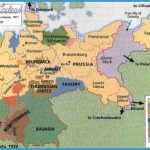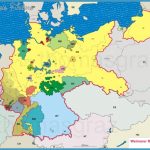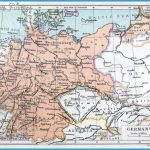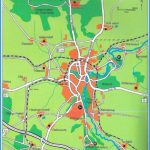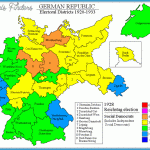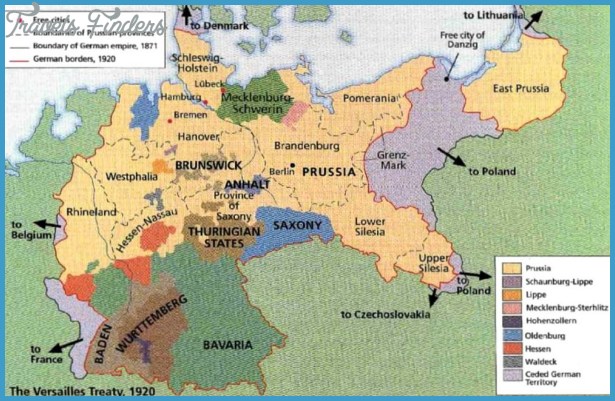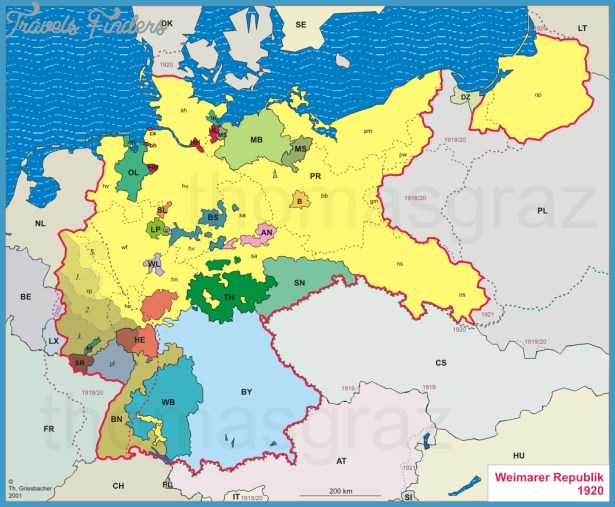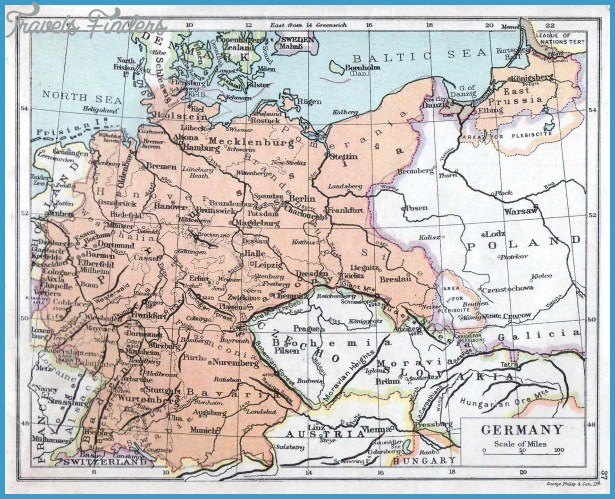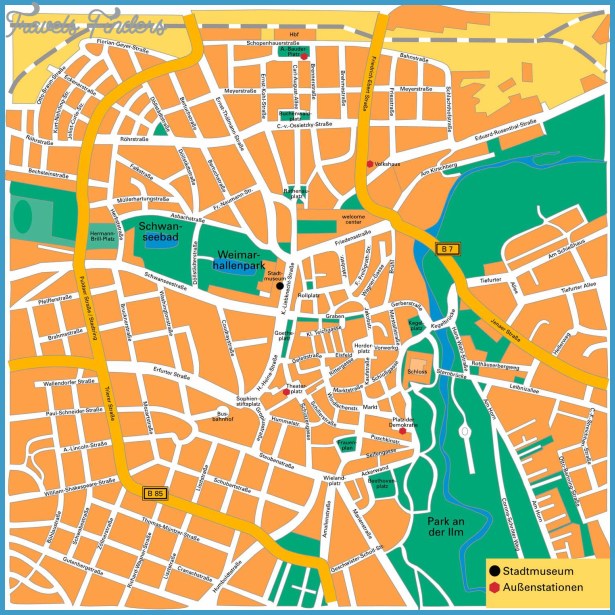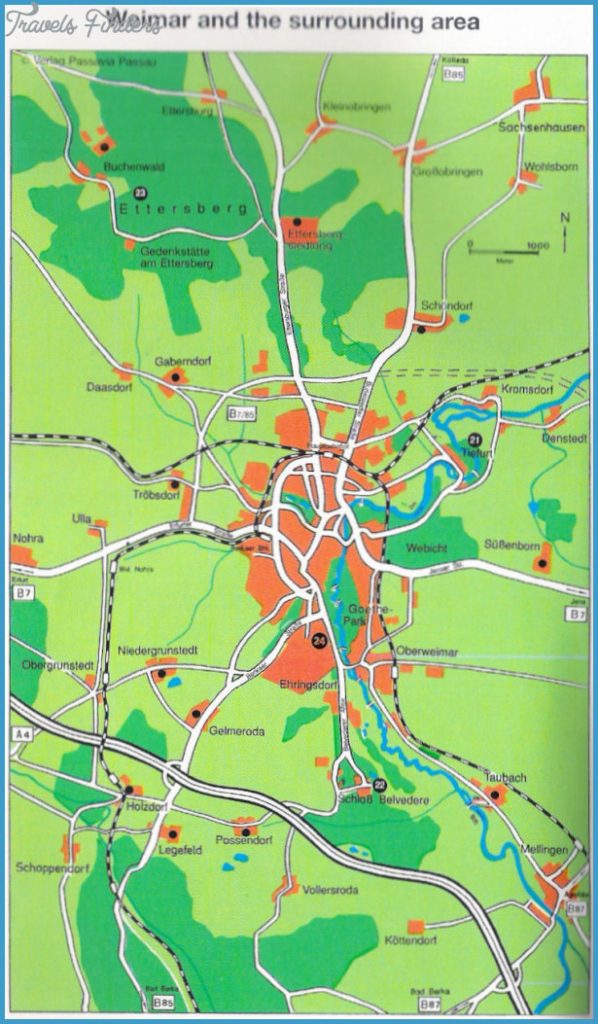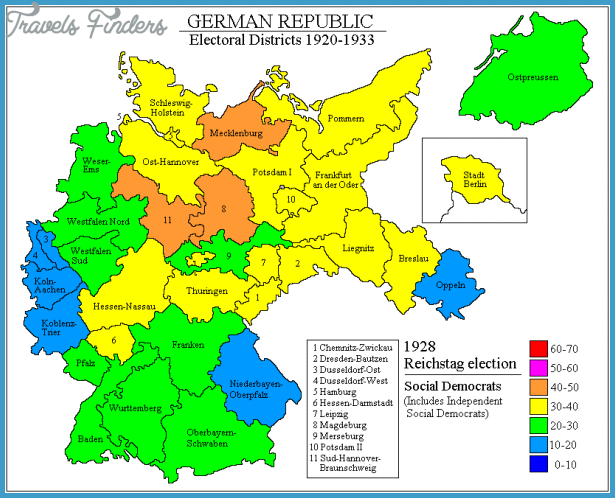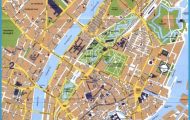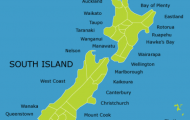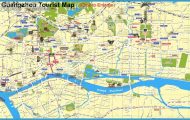WEIMAR MAP
While countless German towns leap at any excuse to build memorial Goethe-hauser (proclaiming that Goethe slept here, Goethe ate here, Goethe once asked for directions here), Weimar (pop. 63,500) features the real thing; the Goethehaus and Goethe-Nationalmuseum, Frauenplan 1, present the preserved private chambers where the poet entertained, wrote, and ultimately died after 50 years in Weimar. (Open April-Oct. Su and Tu-Sa 9am-6pm; Nov.-Mar. 10am-4pm. Expect a wait on summer weekends. ‚6, students ‚4.50.) The Neuesmuseum, Weimarpl. 4, has fascinating rotating exhibits of modem art, including an interactive Terror orchestra, composed of knives, nails, and a hammer and sickle. (Open Apr.-Sept. Su and Tu-Sa 10am-6pm; Oct.-Mar. 10am-4:30pm. ‚3, students ‚2.) South of the town center in the Historischer Friedhof, Goethe and Schiller rest together in the basement of the Fiirstengruft. Schiller, who died in an epidemic, was originally buried in a mass grave. Later, Goethe combed through the remains until he identified Schiller and had him interred in a tomb. Skeptics argued that Goethe was mistaken, but a team of Russian scientists verified his claim in the 1960s. (Cemetery open Mar.-Sept. daily 8am-9pm; Oct.-Feb. 8am-6pm. Tomb open April to mid-Oct. M and W-Su 9am-6pm; mid-Oct. to mid-Mar. M and W-Su 10am-4pm. ‚2, students ‚1.50.)
Trains run to: Dresden (3lAhi. 2 per hr. ‚30); Frankfurt (3hr. every hr. ‚40); and Leipzig (Wzht. 2 per hr. ‚21). To reach Goetheplatz (the center of the Alts-tadt) from the station, follow Carl-August-Allee downhill to Karl-Liebknecht-Str. which leads into Goethepl. (15min.). The tourist office, Marktstr. 10, across from the Rathaus, hands out free maps, books rooms for a ‚2.55 fee, and offers German-language walking tours. The Weimarer Wald desk has lots of info on outdoor activities in the area. (240 00. Open Apr.-Oct. M-F 9:30am-6pm, Sa-Su 9:30am-3pm; Nov.-Mar. M-F 10am-6pm, Sa-Su 10am-2pm.) To get to the student-run KHababusch Hostel O, Geleitstr. 4, follow Geleitstr. from Goethepl.; after it takes a sharp right, you’ll come to a statue on your left. The entrance to the Hababusch is behind the statue. Expect a laid-back atmosphere in the heart of Weimar. (85 07 37. Reception 24hr. Dorms ‚ 10; singles ‚ 15; doubles ‚24.) In a lovely Jugendstil mansion, Jugendherberge Germania (HI) , Carl-August-Allee 13, has convenience written all over it. ( 85 04 90. Breakfast and sheets included. Internet access. Dorms ‚20, under-27 ‚17.) A combination cafe and gallery, ACC , Burgpl. 1-2, is popular with students and vegetarians. (Open daily noon-lam.) The daily produce market, at Marktpl. has groceries. (Open M-Sa 7am-5pm.)
DAYTRIP FROM WEIMAR: BUCHENWALD. During WWII, 250,000 Jews, Roma (Gypsies), homosexuals, communists, and political opponents were imprisoned at the Buchenwald labor camp. Although it was not intended as an extermination camp, over 50,000 died here due to harsh treatment by the SS. The Nationale Mahnmal und Gedenkstatte Buchenwald (National Monument and Memorial) has two principal sights. KZ-Lager refers to the remnants of the camps itself. The large storehouse documents both the history of Buchenwald (1937-1945) and of Nazism in general. The East German Mahnmal (monument) is on the other side of the hill; go up the main road that bisects the two large parking lots or take the footpath uphill from the old Buchenwald Bahnhof and then continue on the main road. The camp archives are open to anyone searching for records of family and friends between 1937 and

